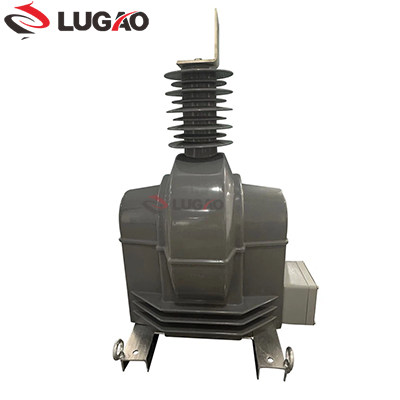How Instrument Transformers Ensure Safety and Accuracy in Electrical Grids
2025-04-22
Instrument transformers are essential components in electrical power systems, playing a critical role in ensuring the safety, accuracy, and reliability of electrical measurements. These devices are used to step down high voltage or current levels to measurable and manageable values, allowing electrical equipment and instruments to monitor, control, and protect power systems effectively. Instrument transformers are typically found in substations, power plants, and industrial settings, where they are used for metering, protection, and control purposes.
The most common types of instrument transformers are current transformers (CTs) and voltage transformers (VTs), also known as potential transformers. Current transformers are designed to measure the current in a circuit, while voltage transformers are used to measure the voltage. These transformers allow electrical engineers and technicians to safely monitor and control electrical systems by providing scaled-down versions of the current or voltage, making it possible to work with safe, low-voltage signals rather than dangerous, high-voltage ones.
One of the primary benefits of instrument transformers is their ability to protect sensitive equipment and personnel from high-voltage hazards. By stepping down high voltage or current to safer, lower levels, these transformers prevent damage to measurement devices and help ensure that operators and maintenance workers are not exposed to dangerous electrical conditions. This safety feature is particularly important in environments where high-voltage systems are used, such as power distribution networks, industrial machinery, and large-scale energy generation plants.
Instrument transformers are also crucial for achieving accurate electrical measurements. For accurate metering and control of electrical systems, precise and reliable data is necessary. Instrument transformers provide this by delivering scaled-down, proportional signals that represent the actual values of voltage or current in the system. This enables the accurate measurement of power consumption, which is vital for billing purposes, energy monitoring, and load analysis. Without instrument transformers, it would be nearly impossible to obtain accurate readings from high-voltage circuits, as the equipment used to measure them would either be damaged or incapable of handling such levels.
Another important function of instrument transformers is their role in system protection. In power systems, protective relays are used to detect abnormal conditions, such as short circuits or overloads. Instrument transformers supply the necessary input to these relays, allowing them to detect faults and activate protective measures. By accurately measuring the current and voltage levels, instrument transformers enable protection systems to identify and isolate faults quickly, preventing further damage to equipment and reducing the risk of system outages. This makes them a key component in maintaining the reliability and stability of power grids and electrical networks.
Instrument transformers also offer the advantage of scalability and adaptability. They can be designed to handle a wide range of voltages and currents, making them suitable for various applications in different sectors. From small-scale industrial equipment to large power transmission networks, instrument transformers can be customized to meet the specific requirements of the electrical systems they are monitoring. This versatility makes them a valuable tool in many industries, including energy, manufacturing, transportation, and telecommunications.
The accuracy and performance of instrument transformers are influenced by factors such as the quality of materials used, the design of the transformer, and its calibration. For instance, high-quality insulation materials and precision winding techniques are critical to ensuring that instrument transformers can operate reliably over extended periods. Regular testing and calibration are also necessary to maintain the accuracy of these devices, ensuring that they continue to provide accurate readings and reliable protection.
As technology advances, the design and functionality of instrument transformers are continuously improving. Modern instrument transformers are becoming more compact, efficient, and easier to integrate into digital control systems. The integration of digital technology into instrument transformers allows for more precise measurements, real-time monitoring, and enhanced communication capabilities. This digitalization trend is transforming the way electrical systems are monitored and controlled, leading to smarter and more responsive power networks.
In addition to their traditional role in electrical systems, instrument transformers are increasingly being used in renewable energy applications, such as solar and wind power. As renewable energy sources become more prevalent, the need for accurate and reliable measurement and control systems grows. Instrument transformers play a critical role in ensuring that power generated from renewable sources is accurately measured and integrated into the existing electrical grid, allowing for efficient and sustainable energy distribution.
Instrument transformers are indispensable components in the modern electrical grid. Their ability to safely step down high voltage and current to manageable levels makes them vital for metering, protection, and control purposes in a wide range of applications. As the electrical industry continues to evolve, instrument transformers will remain at the heart of power systems, ensuring that electrical measurements are accurate, systems are protected, and energy is distributed efficiently and safely.



